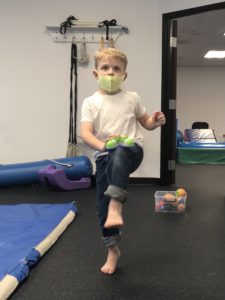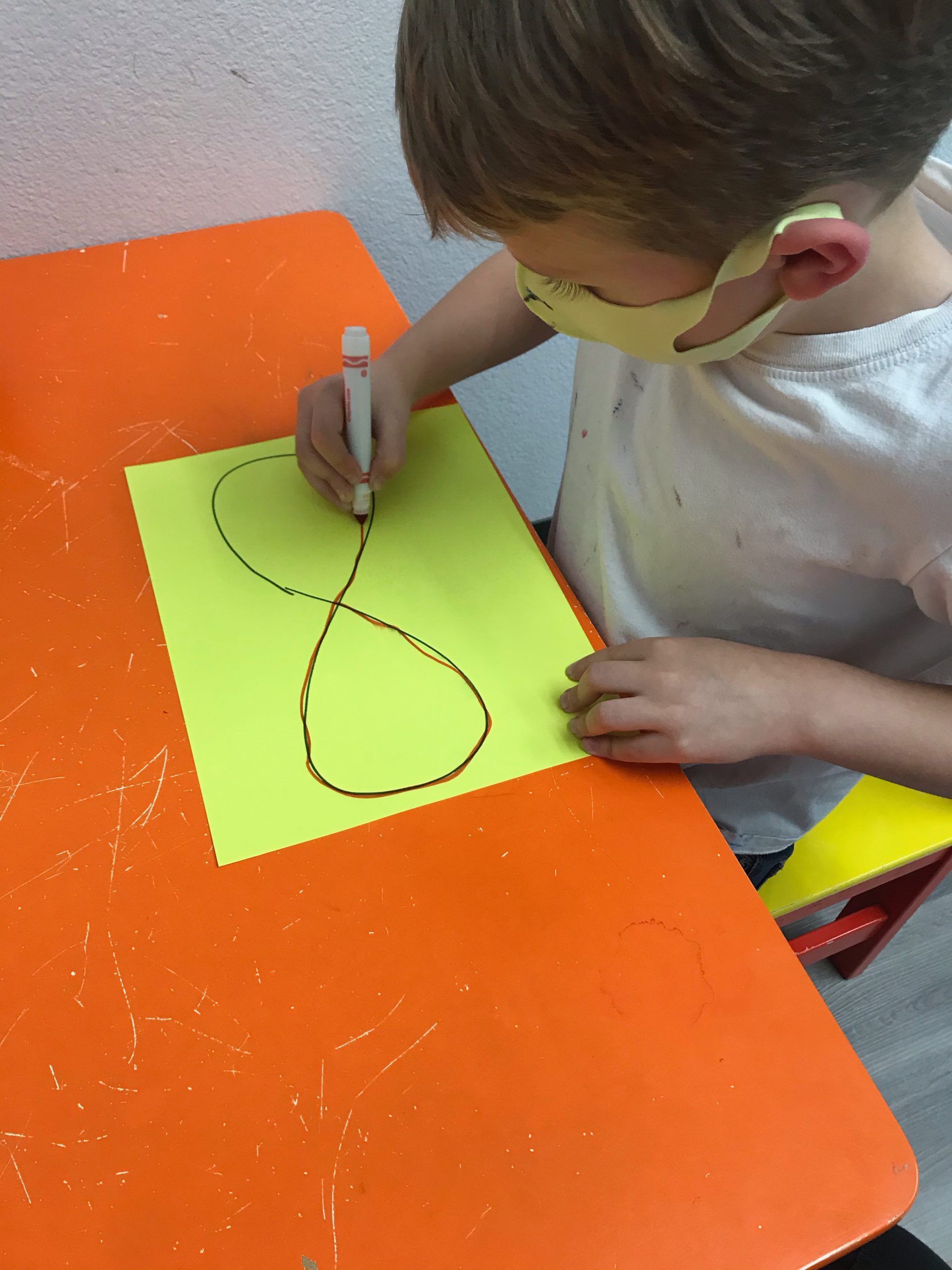Midline Crossing Activities
by Jessica Tallent, OTR/L
Kids Place West Pediatric Occupational Therapist
The midline is the term used to describe the invisible line at the middle of the body which goes from the head to the feet. When children participate in activities that require them to cross the midline, connections in the brain are formed between the right and left hemispheres which helps to improve gross motor and fine motor coordination, cognitive skills, attention, and directional awareness. Sometimes, children (and adults) have difficulty with coordination of movement across midline which can affect function.
Activities that may be difficult if midline crossing is delayed:
- Gross motor skills such as crawling, walking, riding a bike, jumping jacks or any task requiring use of both sides of the body.
- Age-appropriate self-care skills such as dressing, bathing, brushing hair, or self-feeding.
- Fine motor and bilateral coordination tasks such as cutting, lacing beads, drawing/writing (especially intersecting lines), and fasteners such as buttons or zippers.
Signs that midline crossing is difficult:
- Strong side preference during gross motor tasks such as always stepping up with the same leg, always kicking a ball with the same foot.
- Frequently switching hands during fine motor tasks such as coloring, writing, and feeding depending on where the food or marker is located. Typically, we see kids switch hands at the middle, or use the right hand with items presented to the right, and left hand with items presented to the left.
- Turning head to visually follow a target rather than following with eyes, or losing focus on the target when the target reaches the middle of the body.
- Turning trunk or body to retrieve something to the side rather than reaching with opposite hand.
- Difficulty with reading across a page.
- Difficulty with bilateral tasks such as cutting, lacing beads, clapping or banging toys together.
Activities to improve midline crossing:
 Play in side sitting – sit with weight shifted to one side, weight placed through supporting arm on that side, and interaction with toy occurring with the opposite hand.
Play in side sitting – sit with weight shifted to one side, weight placed through supporting arm on that side, and interaction with toy occurring with the opposite hand.- Placing toys – place toys, stickers, etc. to one side of the body and reach with the opposite hand, or retrieve toys from same side and place into bin on opposite side without switching hands.
- Patty cake – facing each other, play patty cake connecting right hand to right hand (opposite side when facing each other) and left to left. See how many repetitions you can get without a mistake. Play to a rhythm to improve coordination and timing.
- Figure 8 activities – draw a figure 8 either upright or to the side (infinity symbol) with markers, paint, etc. Move through figure 8 pattern while walking, bear crawling, etc. making sure to move across the ‘x’ in the middle.
- Bird dogs – from hands and knees position, reach forward with one arm while lifting the opposite leg.
- Windmills – from standing, reach to touch toes with opposite hand.
- Cross marches – while marching, tap hand to opposite knee.









